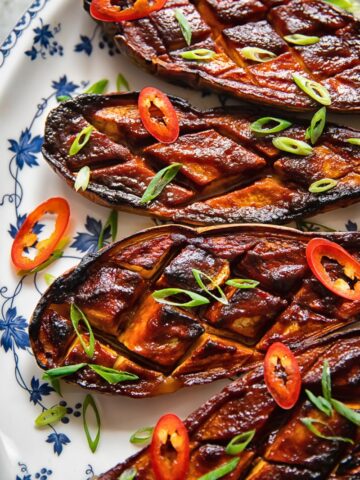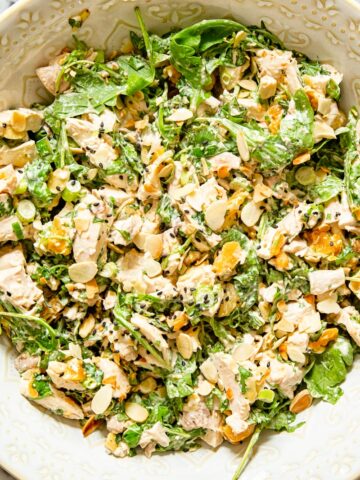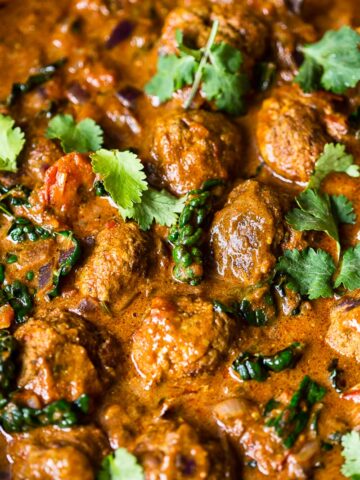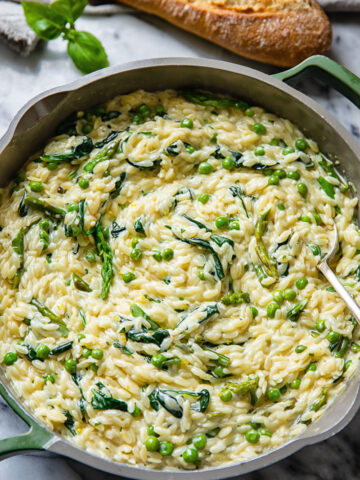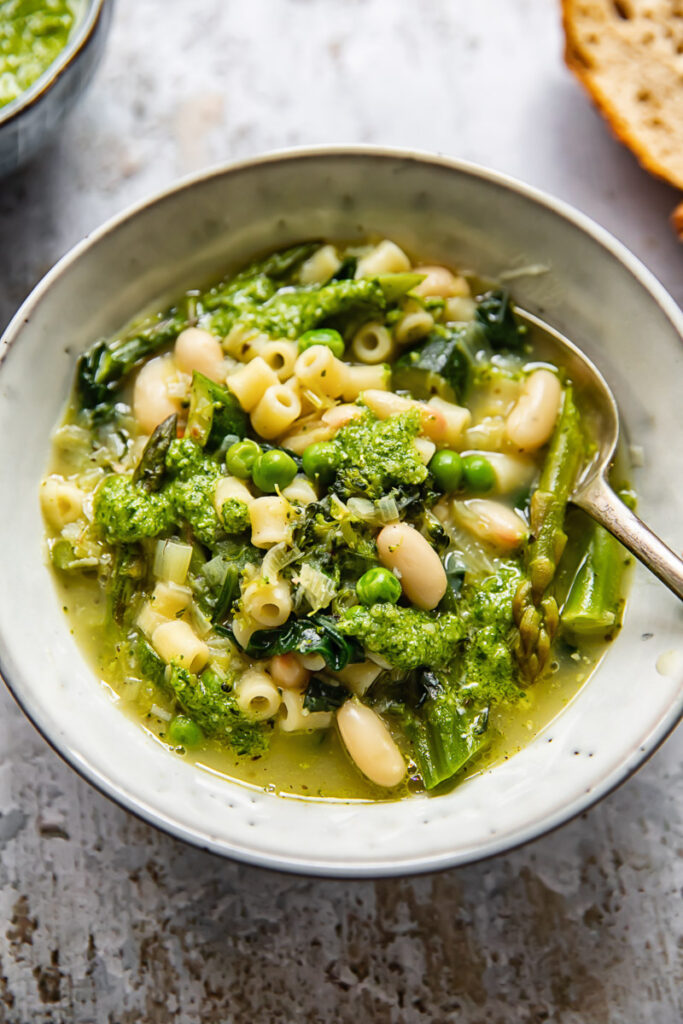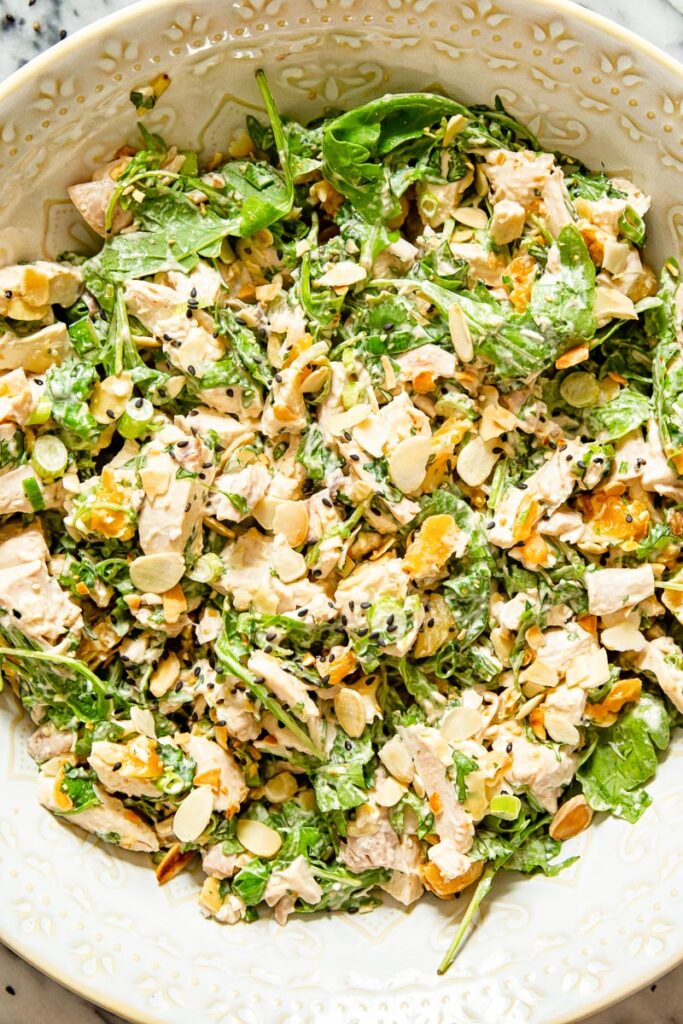Would you like to learn how to make authentic Italian fresh pasta? It’s the easiest thing in the world as the recipe only has 2 ingredients! Flour and eggs!
For the easiest sauce to accompany your delicious fresh pasta don’t forget to make my easy Pasta Cream Sauce Recipe or Bolognese Sauce.
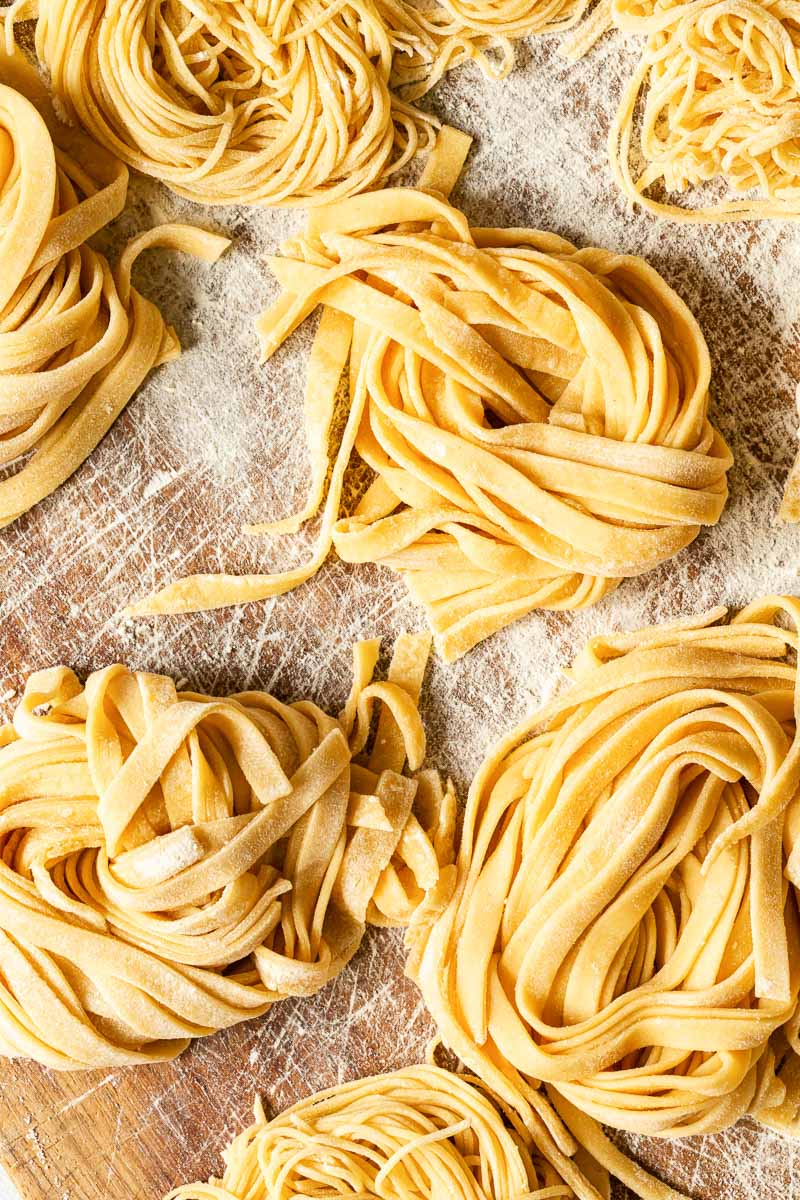
Fresh Pasta
While I realise not everyone will feel the need to make their own fresh pasta at home I believe they might change their mind once they see just how EASY it is to do.
I am no stranger to pasta making. I grew up watching my granny and my mom making homemade noodles for chicken noodle soup since I was little. Filled pasta like pierogi or pelmeni was also a staple in our house. Similar principle but not the same recipe as Italian pasta.
However, I never made my own Italian pasta until our recent trip to Southern Italy. Taking a cooking class in Italy seemed like a fun idea when we booked our tickets. And guess what…it was!
The cooking class advert promised to teach us how to make 3 typical Italian recipes. Eggplant Parmigiana, Fresh Pasta and Bolognese Sauce. I thought to myself it was too ambitious for a 4 hour class. It turned out to be just enough time because none of those dishes take ages to make!
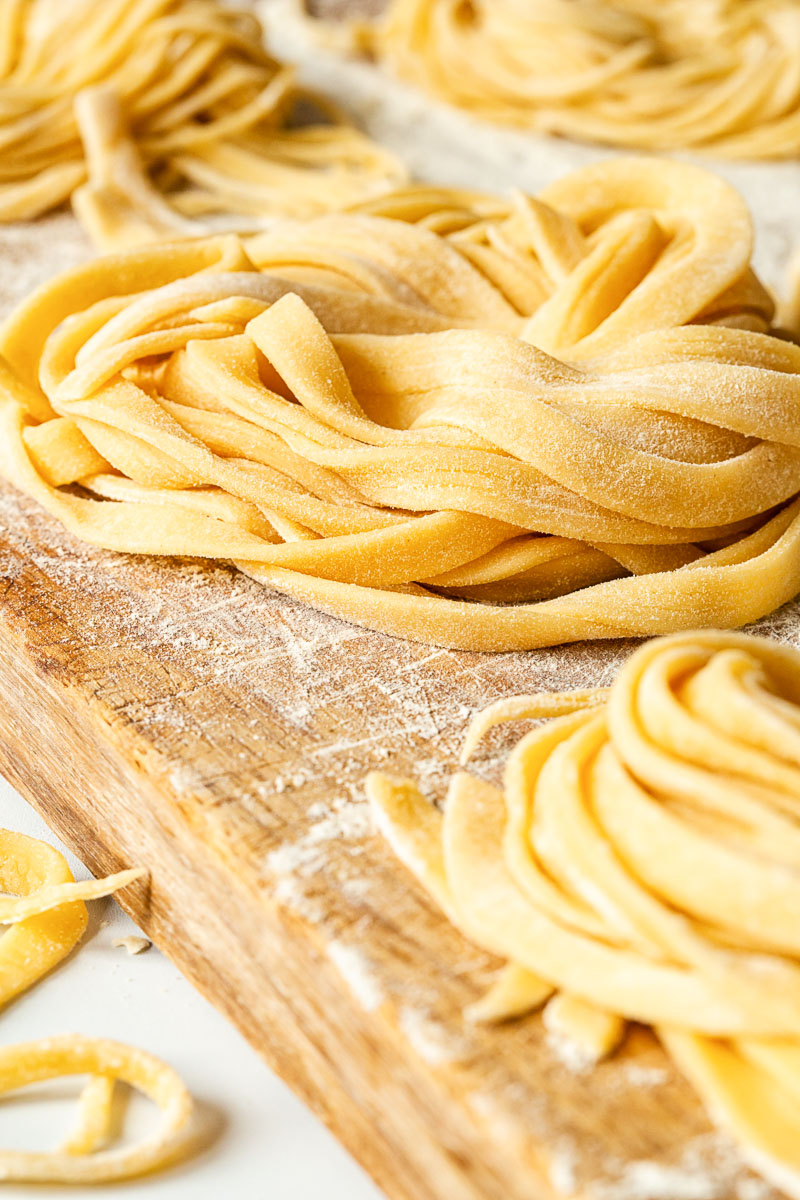
How to make it at home
The basic pasta recipe is incredibly simple. 100g of pasta flour to 1 large egg per person. That recipe worked like a charm when we used it in Italy. However when I got home and tracked down the right kind of flour, which is called “00” flour, it didn’t quite work the same.
Different flour, humidity, the size of eggs. All of those factors contribute to the right texture of the perfect pasta dough. That being said you still can be successful at making fresh pasta at home using this master recipe.
Just be prepared to use either a splash of water or a touch of flour to get your pasta dough to the right consistency. Which bring us to the next question.
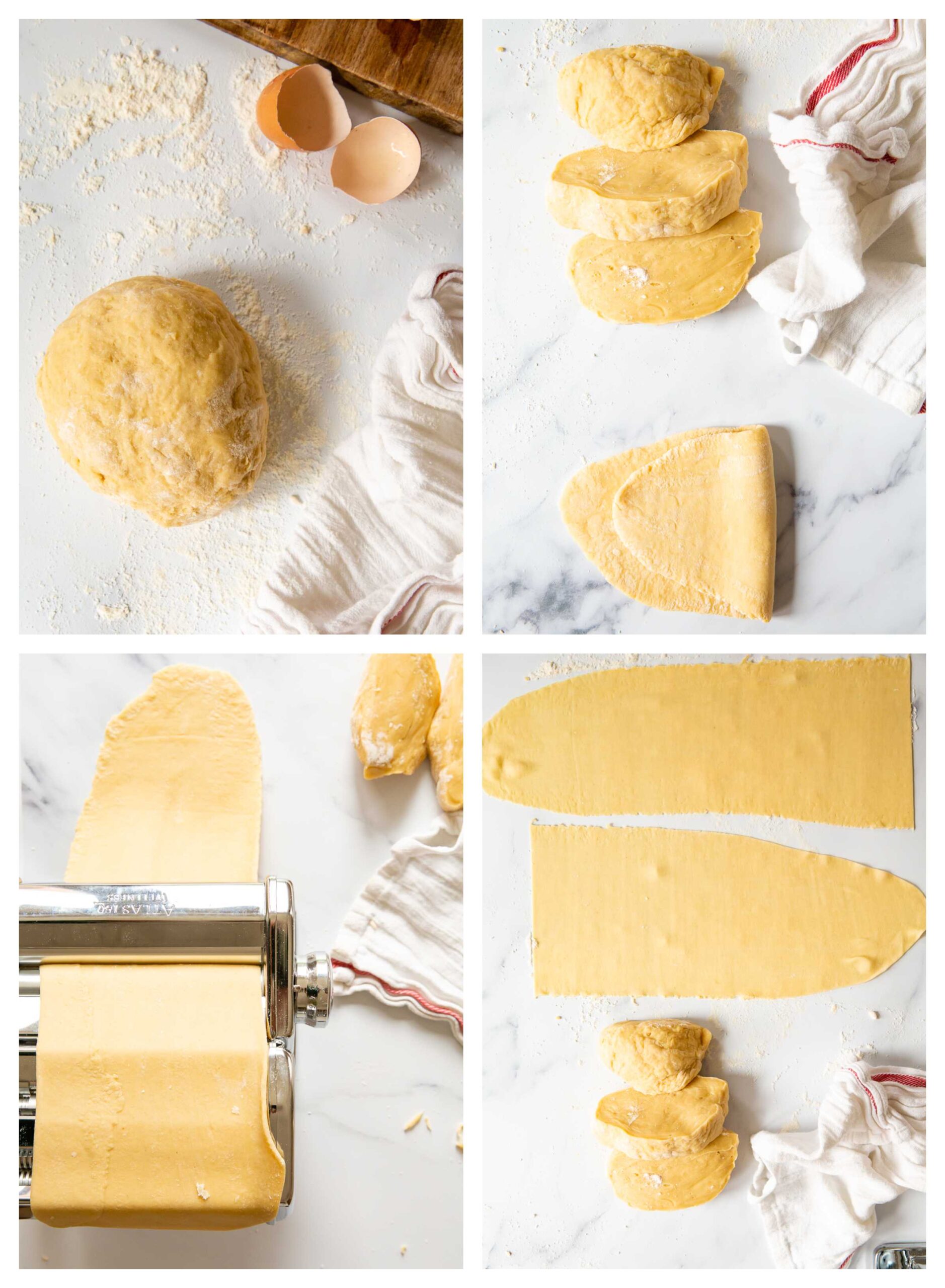
Pasta Dough Consistency and Texture
Homemade pasta dough should be firm and pliable at the same time. If it’s too soft the pasta will turn out to be too sticky. If it’s too hard, it will be too rubbery.
This is probably too much information and might sound overwhelming. How am I supposed to know what pasta dough texture will produce the best tasting fettuccine you might be thinking but don’t worry!
There is no magic answer to that except for trial and error. Just like with bread making it takes time and experience to figure it out but I guarantee that even your first attempt at pasta making will taste incredible to you!
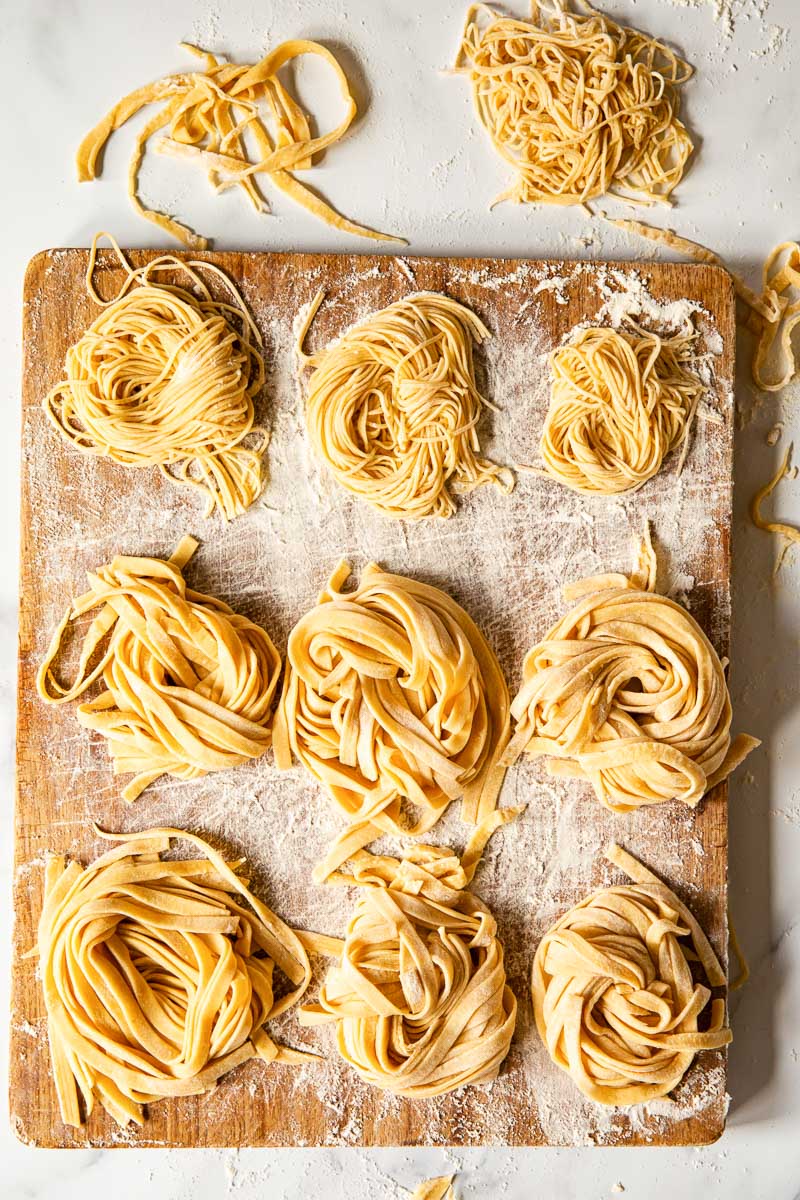
Mixing pasta dough by hand vs. machine
I’ve done both and while mixing the dough by hand is very simple and doesn’t require extra equipment, it could be tiring, especially if you are making enough for a large family. Using either method delivers pretty much identical results.
If you decide to make your pasta using the original method, simply dump your flour onto work surface, form a well in the center with your hand and break eggs directly into the well.
Then break up the egg yolks with the tips of your fingers and star working the eggs into the flour until you get the dough. Alternatively you can use a fork to break the eggs. Simple. If your dough is too stiff start adding water one tablespoon at a time for the right consistency.
If you use a similar stand mixer, make the dough by combining the flour and eggs and mixing them with a dough hook attachment. You can also use a food processor. Just add both ingredients at the same time, hit the ON button and let it run until a dough ball forms.
With both methods watch out for the right dough consistency and adjust wet or dry ingredients as needed. Always allow the dough to rest for 20-30 minutes before moving to the next stage of shaping pasta.
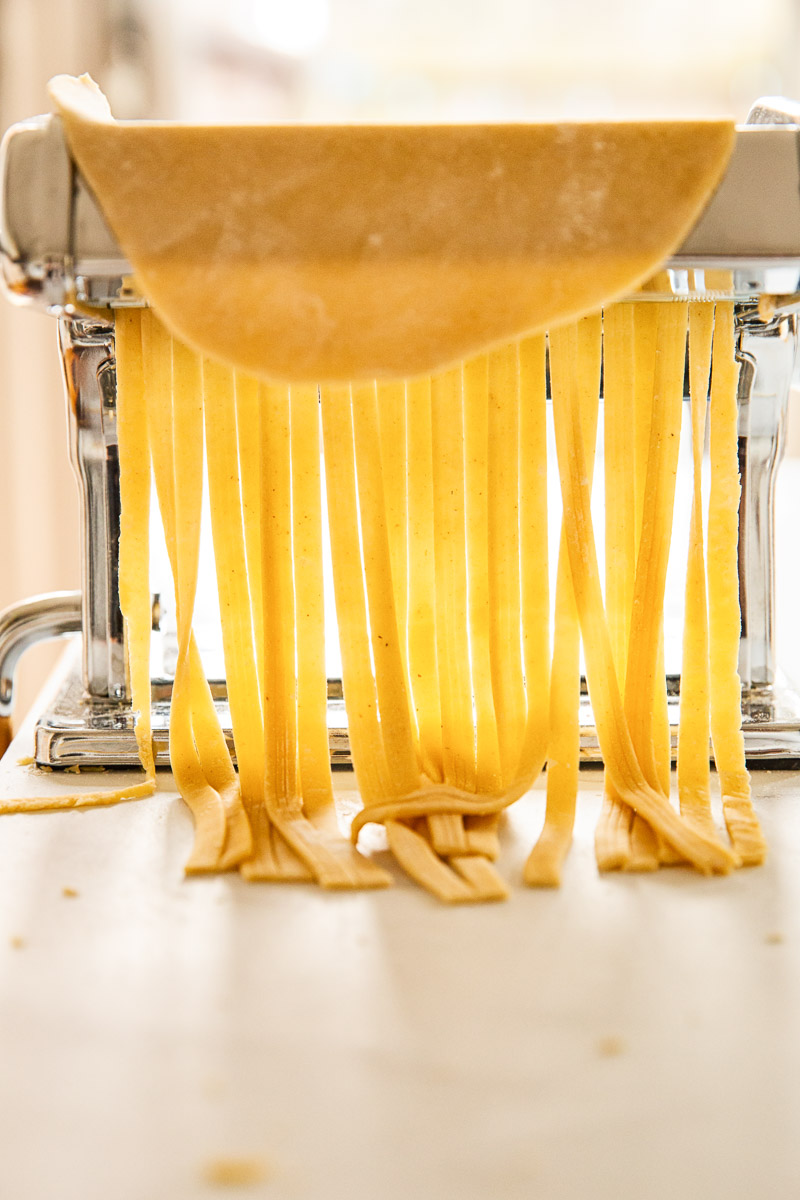
How to shape pasta
The last and the most fun step is turning pasta dough into actual pasta. And here is where you will need the help of a pasta machine. While it possible to shape pasta by hand it’s a tedious and tiring process of rolling it out to proper thickness and then cutting into pasta ribbons.
If you don’t mind investing a little money, a good pasta machine will last you a lifetime. It’s incredibly easy to use and store. The pasta machine I own is Marcato Atlas, which comes with two attachments for making tagliatelle/fettuccine and tagliolini, both pictured in this article.
Fun fact. Tagliatelle and fettuccine is the same pasta shape but known by different names in Northern and Southern Italy respectively.
If you are brave enough to make tagliatelle by hand. All you need to know is that Italians are serious about their pasta standards. Tagliatelle must be 6mm-7mm wide when cut into strips. Our Italian teacher measured hers with a ruler!
The uncut pasta sheets straight from the machine are what you would use in a lasagna recipe.
The actual process
Slice the rested pasta dough into 4 equal disks as shown in the photo above. Make sure you dust your dough disk with flour before you send it through a pasta machine to prevent from sticking. Keep the rest covered under a tea towel.
Start with the widest setting. After the first time fold the dough over and send it through the machine again. Then change the setting to 3 and repeat the process. Finally go up to 6 or 7 depending on the thickness you like. I prefer using 6 for tagliatelle and 7 for tagliolini.
Once the dough sheet is the desired thickness, cut it in half as it will be very long and lightly dust with flour. Switch to the pasta cutting attachment and turn your pasta sheet into beautiful pasta ribbons.
Dust with flour and gather into a nest. Proceed with the rest of the dough.
Tagliatelle or fettuccine is my favourite pasta shape. What is yours? Let me know in comments!
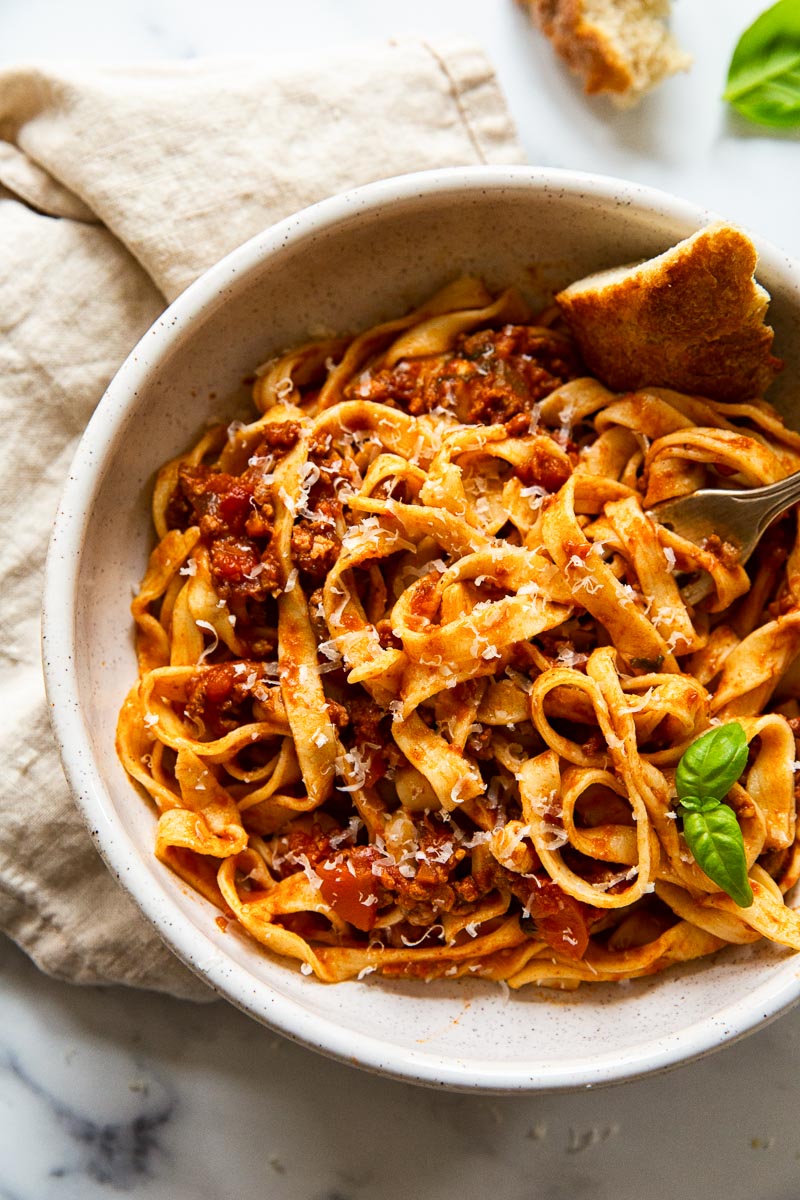
Recipe tips and notes
- Making pasta requires a bit of attention to the consistency of the dough. You may have to adjust it slightly with a little more flour or a splash of water.
- You will need to let the dough rest for at least 20-30 minutes before shaping. This gives the flour time to hydrate and gluten the chance to relax, which is important for the right texture.
- A pasta machine is going to make all the difference when making homemade pasta. It’ll save a lot of effort and give you pasta that is perfectly even. Be sure to dust the dough before putting it through the pasta machine, though, or it’ll end up sticking!
- It is, of course, possible to make fresh pasta by hand if you don’t mind a little extra effort. Take the time to make sure that the thickness is consistent throughout so that all the pasta cooks at the same rate.
- If you don’t intend to cook your fresh pasta right away, I recommend drying it out a bit to prevent sticking and clumping together. You can either purchase a pasta drying rack or use the handle of a wooden spoon and your imagination to make one.
- Fresh pasta takes no more than 3 minutes to cook for the traditional al dente taste. This is much quicker than dried pasta, so be careful not to leave it too long!
Favourite Recipes Using Fresh Pasta
- Creamy Tagliatelle with Bacon, Mushroom and Truffle Oil
- Tagliatelle with Pancetta, Basil and Mozzarella
- Seafood Lasagna
- Easy Lasagna Soup
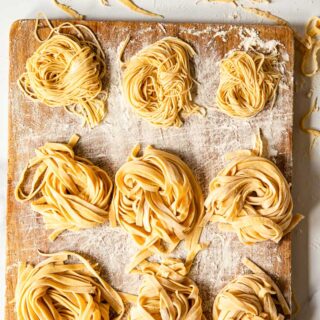
Homemade Fresh Pasta Recipe
Ingredients
- 400g/3 cups+2 tbsp 00 pasta flour
- 4 eggs large
Instructions
To make pasta dough
- Empty your flour onto work surface, form a well in the center with your hand and break eggs directly into the well.Then break up the egg yolks with the tips of your fingers and star working the eggs into the flour until you get the dough. Alternatively you can use a fork to break the eggs. Simple. If your dough is too stiff start adding water one tablespoon at a time for the right consistency.
- If you use a KitchenAid mixer or a similar stand mixer, make the dough by combining the flour and eggs and mixing them with a dough hook attachment.
- You can also use a food processor. Just add both ingredients at the same time, hit the ON button and let it run until a dough ball forms.
- With both methods watch out for the right dough consistency and adjust wet or dry ingredients as needed. Cover the pasta dough and let it rest for 30 minutes before shaping it.
To shape pasta
- Slice the rested pasta dough into 4 equal disks as shown in the photos. Make sure you dust your dough disk with flour before you send it through a pasta machine to prevent from sticking. Keep the rest covered under a tea towel. Start with the widest setting. After the first time fold the dough over and send it through the machine again. Then change the setting to 3 and repeat the process. Finally go up to 6 or 7 depending on the thickness you like. I prefer using 6 for fettuccine and 7 for finer pasta like tagliolini or ravioli.
- Once the dough sheet is the desired thickness, cut it in half as it will be very long and lightly dust with flour. Switch to the pasta cutting attachment and turn your pasta sheet into beautiful pasta ribbons. Dust with flour and gather into a nest. Proceed with the rest of the dough.
To cook fresh pasta
- Cook in a large pot of boiling salted water for 3 minutes. Then mix with a sauce of your choice.


